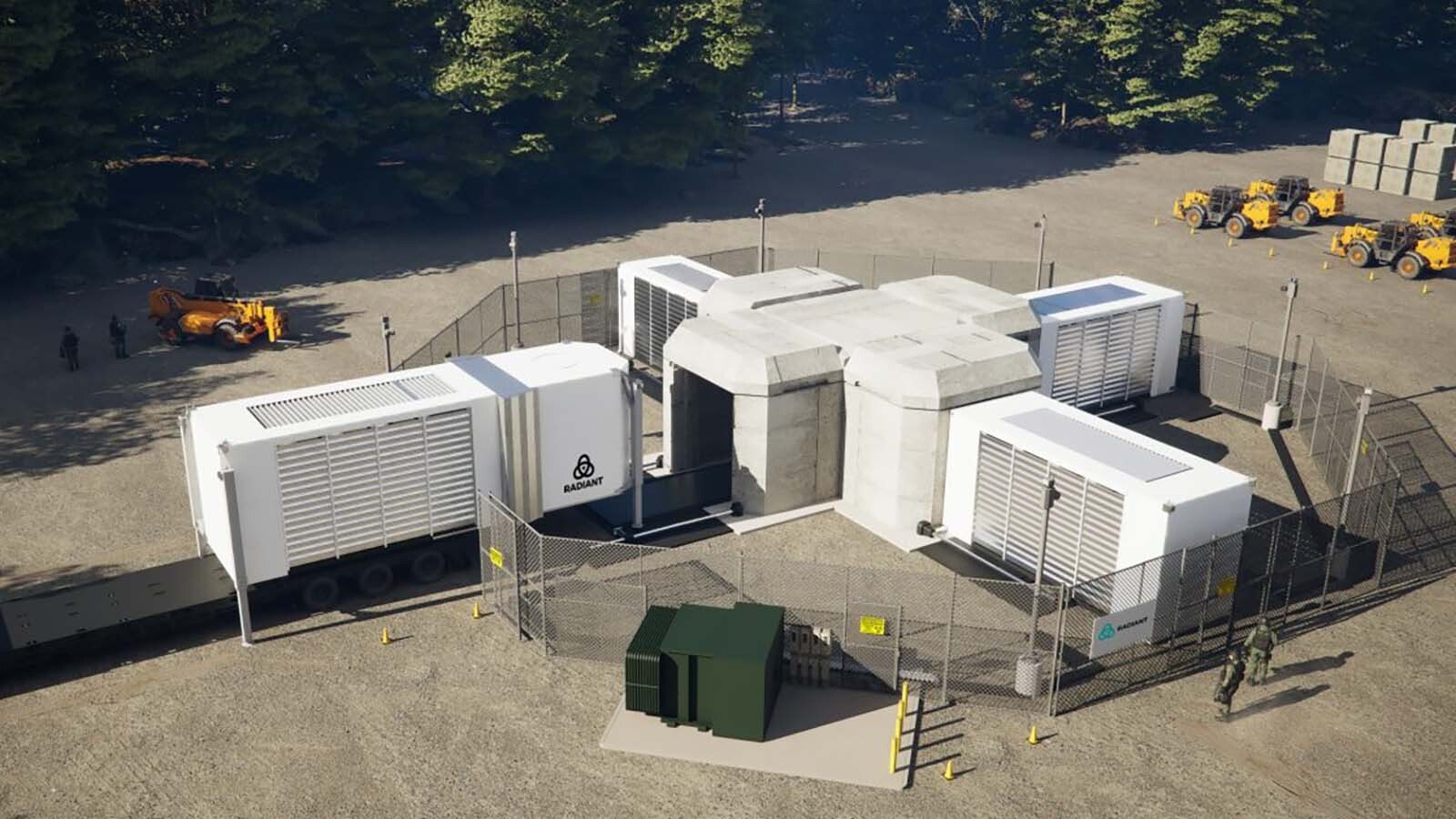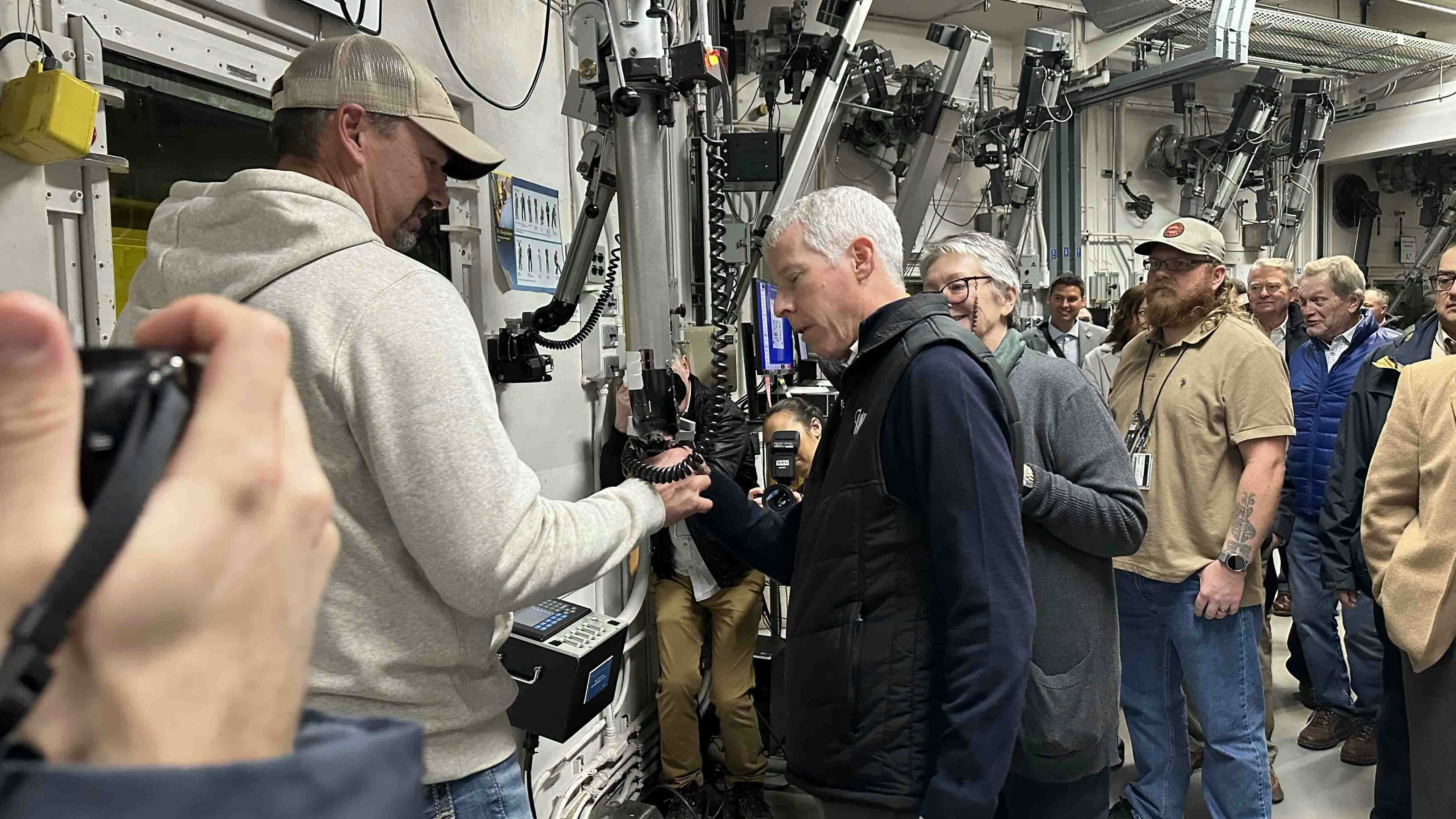LARAMIE — A University of Wyoming professor is developing what could be groundbreaking technology to protect nuclear reactors from earthquake damage.
Ankit Saxena recently received a $200,000 federal grant to develop a system to help absorb the disruption that can be caused by earthquakes. The research is developing as site preparation is already underway on TerraPower’s Natrium reactor in Kemmerer and wheels are in motion for a micronuclear power boom in the United States.
Given the threat from earthquakes, some worry that the entire industry is on shaky ground. But the National Science Foundation is backing Saxena’s research because it sees potential in seismic damping technology. This puts UW at the forefront of efforts that set out to make nuclear reactors earthquake proof.
The two-year NSF grant will fund research into embedded particle dampers, which are basically a constellation of vibration sponges buried strategically 360 degrees into the earth around and below a nuclear reactor.
This technology also could be installed around existing nuclear facilities to dissipate or reflect seismic waves as they ripple through the ground.
"I'm the engineer who makes sure that doesn't break," Saxena told Cowboy State Daily, comparing his work to preventing aircraft wings from shaking apart during flight.
His particle damper technology involves burying box-like containers filled with specially designed particles. When seismic waves hit these containers, the particles collide with each other and the walls, dissipating energy that would otherwise reach the reactor.
The research comes as earthquake safety remains a significant concern for the nuclear industry, particularly as Wyoming positions itself as a leader in next-generation nuclear technology. The state is preparing to host TerraPower's advanced reactor in Kemmerer, with construction on the plant expected to begin in early 2027.
"I tailored it toward nuclear,” said Saxena, describing his grant proposal. “But it's a technology that can be used for seismic protection of anything right around a building. Put it around a wind turbine, put it around a coal powerplant. Doesn't matter what it is. It's completely energy agnostic."

Microreactor Sites
Saxena's research specifically targets small modular reactors and microreactors, the type of compact nuclear technology gaining traction in Wyoming and across the U.S. Unlike massive traditional nuclear plants, these smaller facilities could more feasibly be surrounded by particle damper systems.
"A microreactor is the size of just a semitruck, right? It's shipping containers," Saxena said. "It's a little bit more realistic to imagine that you could spread that around a small modular reactor.
“Nuclear is such an important field of research right now. It's a priority for the state."
The specific materials for the particles — which could range from concrete to hard rubber — would depend on the location, soil type and expected seismic activity.
Fukushima's Shadow
The nuclear industry's earthquake concerns trace back most recently to March 11, 2011, when a magnitude 9.0 earthquake and subsequent tsunami devastated Japan's Fukushima Daiichi Nuclear Power Station.
Three of the six reactor units at the plant were operating at the time and shut down automatically during the Great East Japan Earthquake. However, the subsequent 15-meter tsunami caused a loss of power leading to loss of cooling and radioactive releases.
The Fukushima disaster prompted nuclear regulators worldwide to reassess seismic risks at existing facilities.
In the U.S., the Nuclear Regulatory Commission continues to study earthquake fault lines and the potential for seismic activity and ensuing damage at California's Diablo Canyon nuclear power plant.
During recent legislative hearings in Casper about developing Wyoming's nuclear industry, members of the public raised concerns about seismic activity around Kemmerer.
"It is estimated that, worldwide, 20% of nuclear reactors are operating in areas of significant seismic activity,” according to the World Nuclear Association.
As new microreactors and small modular reactors come online, there will be more chances for reactor vs. earthquake collisions.
Radiant, one of the companies that hopes to build microreactors in Wyoming, expressed support for the work at UW, but did not offer a take on the need to surround reactors with seismic sponges.
"Donald Trump has made nuclear energy a priority and Radiant is working to help advance that agenda," the company says in a statement. "Radiant is thrilled to see the University of Wyoming follow suit by continuing to expand their research into nuclear energy."
Saxena's NSF grant will support one Ph.D. student and two undergraduate researchers. The project will combine computational modeling with experimental validation using earthquake simulation equipment in Saxena's lab at UW.
"A significant chunk of this project is going to be experimentally validating my models," Saxena said.
His team will build experimental setups to simulate earthquakes and test how particle dampers perform under various conditions.
"The interactions of a bunch of particles colliding with each other, it's very hard to model when it comes to the physics and mathematics behind it," Saxena said. "I do think that this idea was very timely. Now we’ll see how it evolves."
David Madison can be reached at david@cowboystatedaily.com.





